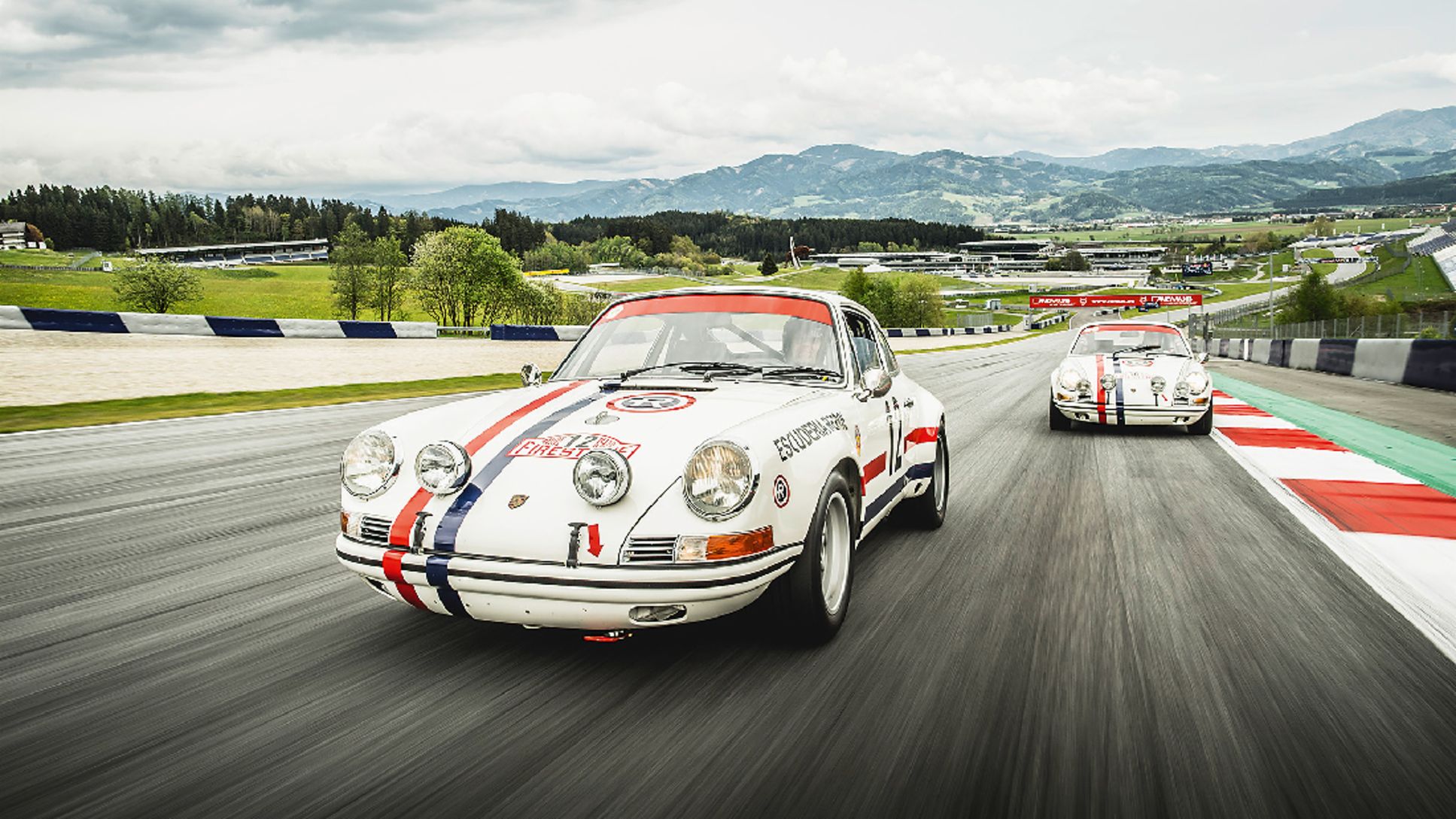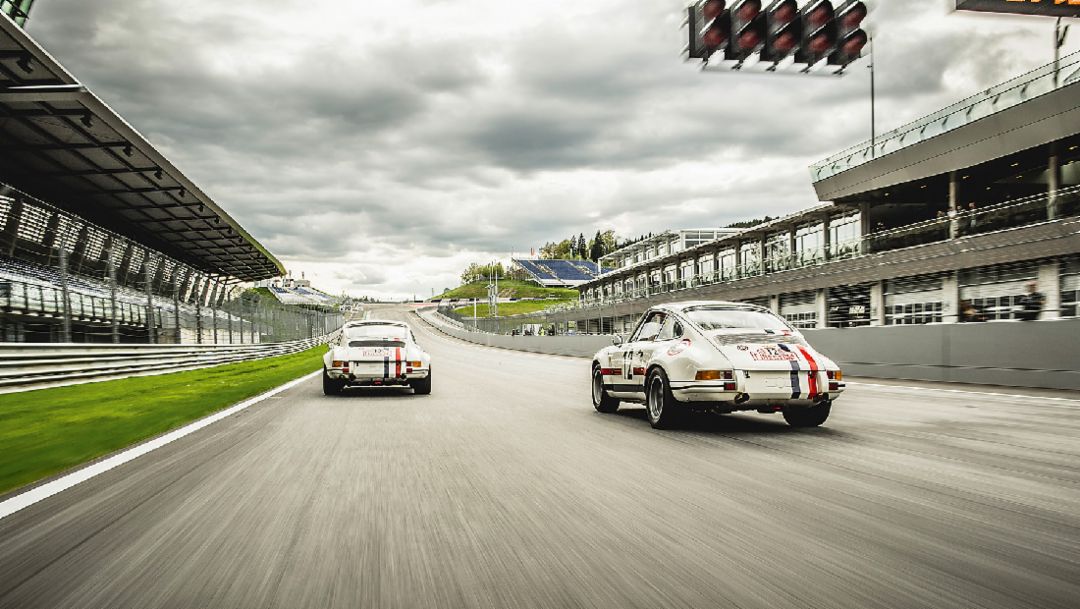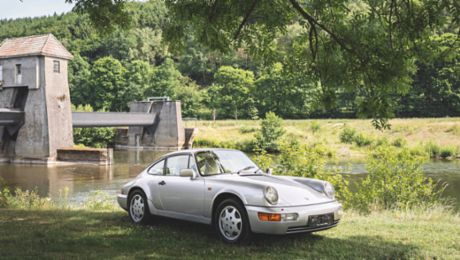Repsol. When motor racing enthusiasts hear the name of the Spanish oil company these days, their thoughts inevitably turn to top-class motorsport and factory teams with state-of-the-art equipment – such as in MotoGP, circuit racing series or rallying.
As early as 1970, Repsol had decided to form a motorsport team under the leadership of Spanish rally driver Eladio Doncel. This team had a budget of more than eight million pesetas, equivalent to around 457,000 Deutsche Mark. The vehicles: two Porsche 911 ST 2.3 cars, whose Group 4 classification was relevant financially. Under Spanish law, these racing cars were considered to be sports equipment and, in contrast to Group 3 vehicles, were therefore not subject to customs duty and import VAT.
Eladio Doncel collected the cars from Stuttgart personally and brought them to Spain bearing customs plates 428-Z-9869 and 428-Z-9743. Shortly afterwards the Repsol logo – the white “R” on a blue background with a red border – adorned the two racing 911s. Elacio Doncel and Alberto Ruiz-Giménez took to the start lines of various Spanish rallies alongside their respective co-drivers. In 1970 they dominated the Spanish Rally Championship, with Alberto Ruiz-Giménez ultimately collecting the title of “Campéon de España de Rallyes” at the end of the season, followed by Eladio Doncel in second place. The team remained successful and kept the Porsche flag flying high in Spain until Eladio Doncel had a serious accident at the “Rally Internacional de Oviedo” in September 1972 in which his car was destroyed beyond repair. Eladio Doncel and his co-driver Antonio G Mantecón were seriously injured in the accident and Doncel retired from active motorsport.
“El Oso” – “The Bear”, as Alberto Ruiz-Giménez was nicknamed, took part in some circuit races in 1972 in an Opel Commodore, during which time Spanish driver José Manuel Lencina took over at the wheel of his Porsche 911 ST 2.3. Porsche Factory Customer Miguel Lopez Jiménez ultimately purchased the car in the mid-1980s, had it repainted and used it on the road. At the beginning of 2015, this 911 ST 2.3 then found its way to its current owner Nikolas Knoll in the south of Munich.
Although a trained economist by profession, the Bavarian has been fascinated with vehicles and their technology ever since he was a child, first with mopeds, then with cars and for the past 15 years exclusively with Porsche. “I caught the Porsche bug much earlier than that from a friend who regularly had vehicles built in the former customer sports department at Helmut Pietsch. As a teenage rally fan, I was of course very excited”, says the 57-year-old, who – with help from friends and experts – set about working on his own vehicles with great passion.
Step by step, both the original and the replica were completed
This enthusiasm for Porsche and the technology finally led to him deciding in 2014 to convert a 911 S from model year 1970 into a 911 ST 2.3, using all of the special parts that the contemporary racing handbook “Sporttechnische Leitfaden für Porsche-Fahrer” from 1970 indicates for this vehicle. These include wings, bonnet and bumpers made from glass-fibre reinforced plastic, lightweight plexiglass glazing at the side and rear, lightweight door panels, widened rear wings, a lowered chassis with seven-inch Fuchs rims at the front and nine-inch Minilite wheels at the rear and, of course, a more powerful engine.
Although the crankcase, crankshaft and connecting rod have been taken from the standard 911 S, the converted vehicle uses hard-chrome-coated cylinders with an 85-mm bore. The car also features special cylinder heads with larger channels and two small spark plugs per combustion chamber, a Marelli twin-plug distributor, Carrera 6 camshafts and a type 46 IDA 3C Weber carburettor. While Knoll was in the middle of converting the ST in 2015, he came across the remaining original Repsol 911 ST 2.3. “Unfortunately, it had some engine damage, but after a thorough visual inspection with experts, I did not hesitate for a single second and decided: now you have two!” recalls Knoll. For the sake of originality he only had to replace minor things like the seats and the rear bumper on the former Spanish racing car. Step by step, both the original and the replica were completed. Today, they delight fans of historic rallying in particular when they appear at classic motorsport events.
The car
Porsche 911 ST 2.3
Technical data
Engine: 911/02 six-cylinder flat engine
Displacement: 2,247 cm3
Bore x stroke: 85 x 66 mm
Compression ratio: 10.3:1
Maximum power: 230 hp at 8,000 rpm
Power transmission: 911/01 five-speed manual transmission with differential lock
Unladen weight: 930 kg
Info
Text first published in the magazine "Porsche Klassik 13".
Text by Jürgen Gassebner // Photos by Stefan Bogner
Copyright: The image and sound published here is copyright by Dr. Ing. h.c. F. Porsche AG, Germany or other individuals. It is not to be reproduced wholly or in part without prior written permission of Dr. Ing. h.c. F. Porsche AG. Please contact newsroom@porsche.com for further information.



